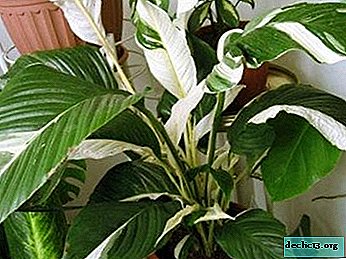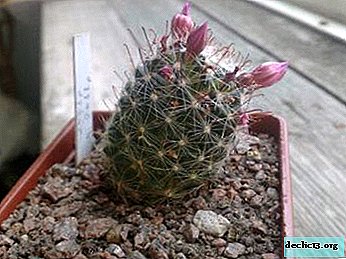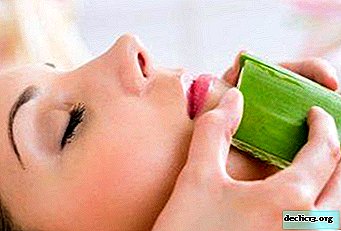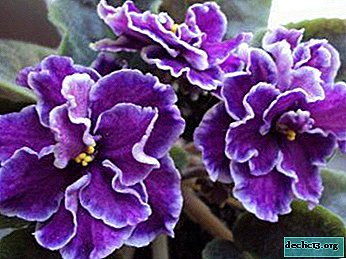How to determine the cause, if the stem of an orchid has dried up, and also what to do for prevention?
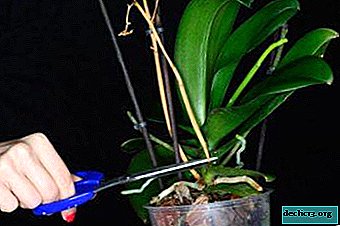
In the world there is a wide variety of colors, the number of which can only amaze the imagination. For every person in the world there is his beloved beautiful plant. One of these may be an unsurpassed beauty - an orchid.
In order for the plant to please as long as possible with its presence and not die, it is worth knowing some rules for care. Consider why the stem of the orchid becomes dried up and what to do if you want to keep the plant healthy.
What happens to this part of the plant?
All orchids are perennial herbaceous plants of the monocotyledonous class, having a large number of species in their repertoire, there are up to 35,000 species of wild-growing and 150,000 artificially bred orchids, and make up 10% of all plants in the world. The stem of an orchid can be:
- long
- short
- upright;
- creeping.
The highest orchid is Grammatophyllum speciosum, the height of this orchid is 7.5 meters.
Why does the trunk dry out?
Drying and yellowing of the stem of orchids is a fairly popular problem. But do not beat the panic, and immediately put an end to your favorite plant. It is necessary to find out the reason in order to further try to eliminate it.
Causes:
- Plant aging - If your plant is more than 5-6 years old, this is normal.
- Excess moisture - what should not be done is to fill the plant with water for sure, everything should be in moderation, otherwise the roots will rot, which is a hello to the death of an orchid.
- Lack of moisture - moisture is necessary, but in moderate doses so that the flower does not dry out.
- Excessive Lighting - no need to do stupid things, and put the orchid in direct sunlight for a long time, although it needs lighting, it is worth providing this correctly.
- Improper fertilizer use - choose fertilizers correctly, otherwise it can lead to bad consequences, if you don’t know which fertilizers to use, you can find out in any store specializing in fertilizers, where they will tell you everything in detail.
- Fungus or parasites in the root system - the plant should be transplanted, this should help solve the problem
If you do not pay attention in time, and don’t start resuscitating your pet, the consequences can be deplorable - this will end in the death of the flower.
Diagnostics
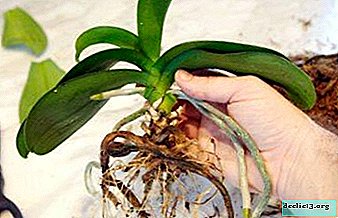 Inflorescences dry up and fall without opening - errors in the temperature regime.
Inflorescences dry up and fall without opening - errors in the temperature regime.- White, gray spots on the flowers - damage to the root system, poor ventilation of the soil.
- Drying of the plant, lack of flowering - this is also due to the incorrectness of the selected temperature regime.
- Drying of the roots - excessive watering.
- Loss of color brightness, thickness and the appearance of the green appearance of the roots inside the pot - insufficient watering, the use of hard water.
If other more serious reasons are not found, then during the eliminated deficiencies in the care, they will lead to the revival of the beauty - orchids.
What to do for prevention?
To avoid drying of the plant, it is worth knowing some rules for care:
- Lighting. Avoid direct sunlight, only ambient light. Choose the east or west side for the habitat of the plant. A lack of light can result in a yellowed stem. Normally, daylight hours should last 11-13 hours. In winter, provide artificial light, you can use the lamp, or fluorescent lamps. Proper lighting is an essential factor for the favorable life of indoor orchids.
- Air humidity - The humidity rate should be between 65 - 75%. In hot weather, do not forget to spray the orchid 2-3 times a day. Watering is only at the root, so as not to spoil the flowers. In winter, do not leave in the draft.
It is important to remember that orchid roots should not be constantly in the water. Between the pan and the pot, for good ventilation of the root system, provide a distance.
- Temperature mode. Favorable temperature - during the day it can be from +18 to +27 degrees. At night, the temperature should not fall below 13 degrees. The temperature regime is very important for the normal life of an exotic flower.
- Watering. Better tolerate drought, but in no case will not tolerate excessive flooding. Moderate watering, all that is needed for their well-being. Signs of excess watering: yellowed leaves, stem, rotting of the roots. In abundant watering, it needs only during a period of active growth, flowering, and ejection of a peduncle.Watering only with soft water, which can be cooled boiled, but not as hard, and cold from the tap. Well melt, settled rain water.
- Winter plant care - at low temperatures and in low light, watering the plant is not necessary at all. Very moderate should be the hydration of the orchid in the period after flowering, as well as in the dormant stage.
Conclusion
When you purchase a flower like an orchid, you should familiarize yourself with all the quirks of its care, because it is not so simple. One watering 2 times a week will not do here, as is the case with many indoor plants. Orchid requires a lot of attention. It is worthwhile to carefully monitor its condition, and at the first signs of the appearance of diseases, it is necessary to take rescue measures as soon as possible.

 Inflorescences dry up and fall without opening - errors in the temperature regime.
Inflorescences dry up and fall without opening - errors in the temperature regime.

